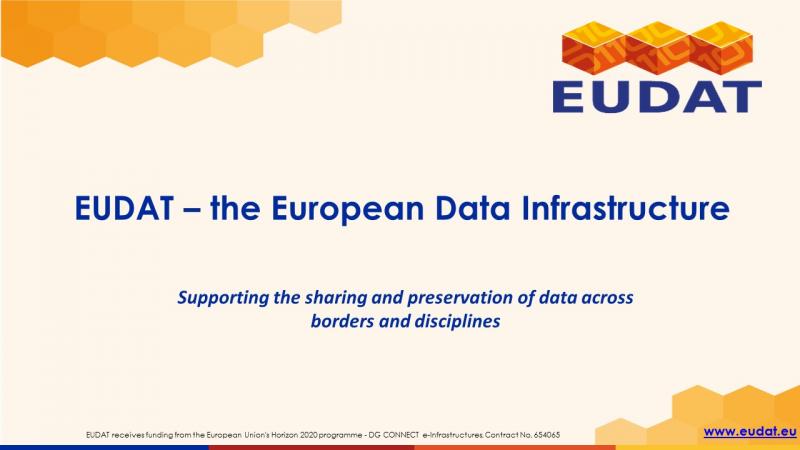
From research infrastructures to e-infrastructures via the user community. Pursuing an active engagement strategy with stakeholders has always been a priority for EUDAT. One of its main ambitions is to bridge the gap between European research infrastructures and e-infrastructures.
Why is it important to involve user communities?
Active involvement of user communities in all design and development steps is a must for eInfrastructures and increases the likelihood of broader uptake of deployed services. Finding new communities and engaging with them to identify their requirements and needs for research data management is fundamental to expand EUDAT’s horizons and customise its offer to meet users’ needs.
How is EUDAT working with users?
Over 35 different user communities are currently using and testing EUDAT research data management services, with the intention to integrate them with their own systems. In a recent video interview some of these users explained the benefits of collaborating with EUDAT. For instance, EUDAT’s repository capabilities are being used to unite separate databases, as Ingemar Häggström (EISCAT) explains, and its replication technology is being tested to replicate data across sites, Shaun de Witt from CCFE says. Besides the above disciplines, EUDAT services are also being employed within the Medical field as stated by Wolfgang Kuchinke, from Heinrich-Heine University in Düsseldorf. Libraries represent an important stakeholder, and EUDAT’s services are in fact being tested to improve and facilitate processes such as the digitalisation of documents and “the possibility of off-site cloud storage of digital images, because they don’t really want to be a data centre themselves” adds Rob Baxter, from EPCC speaking about a data project with the National Library of Scotland. Whatever the discipline, usually every research infrastructure builds their own system, which makes data usage very confusing for the user, while EUDAT could represent the standard system everyone could use, explains Carl-Fredrik Enell (EISCAT).
Finally, integration and interoperability are crucial topics for EUDAT and its communities such as West-Life, which intends to integrate the processing aspects (provided by EGI) with the data access (provided by EUDAT) as Chris Morris from the Science & Technology Facilities Council specifies.
What now?
Monitoring the user communities developments is crucial to understand how EUDAT can better serve those who decide to join and to use its services. As de Witt states:
“if we can demonstrate that it works at a European level, then we can think about scaling it up to a much bigger global scale.”
To see the complete list of data projects in different domains and with different stakeholders, visit the EUDAT Communities & Pilots page.
Listen to EUDAT users and find out for yourself:
